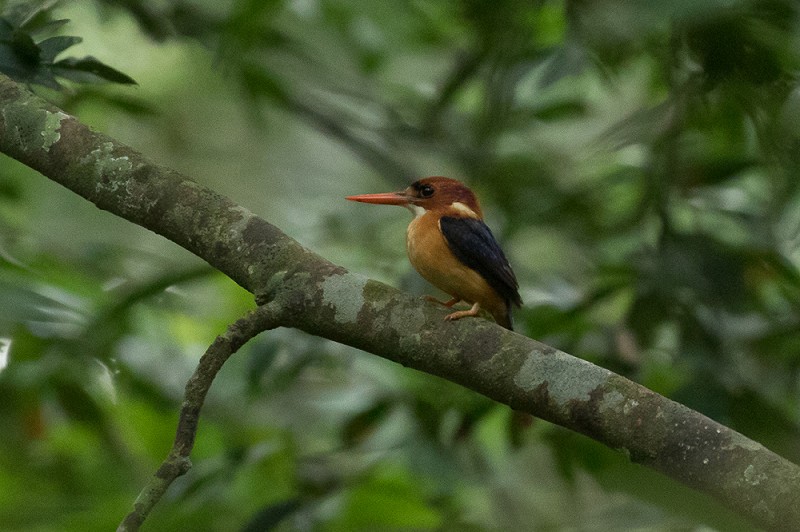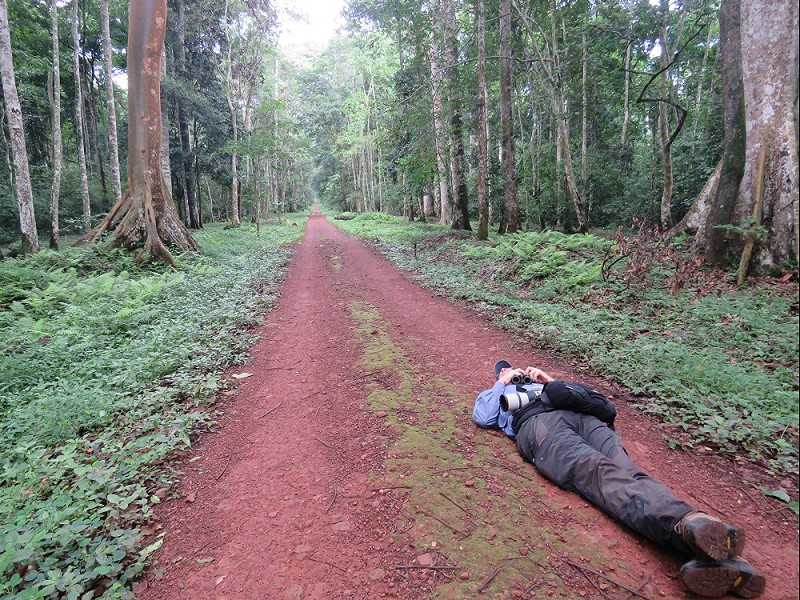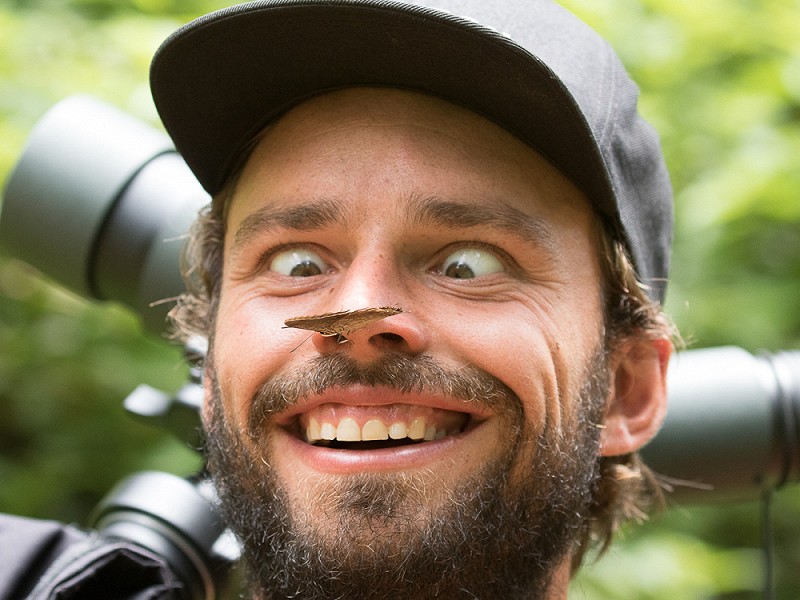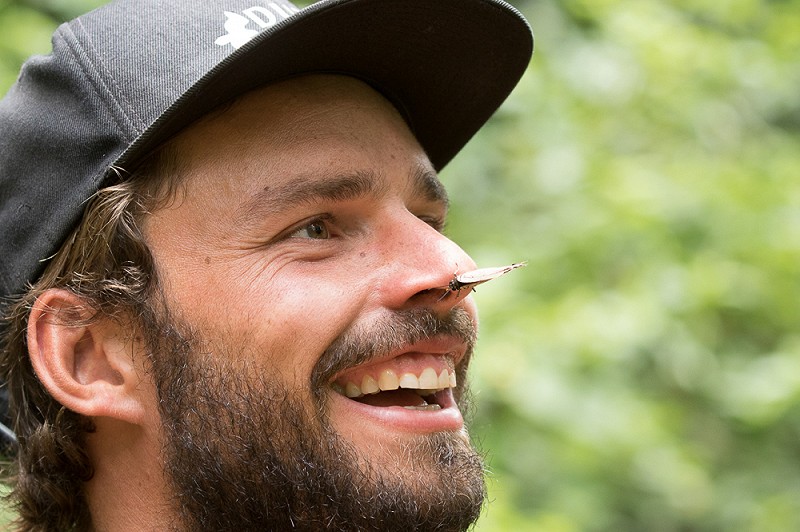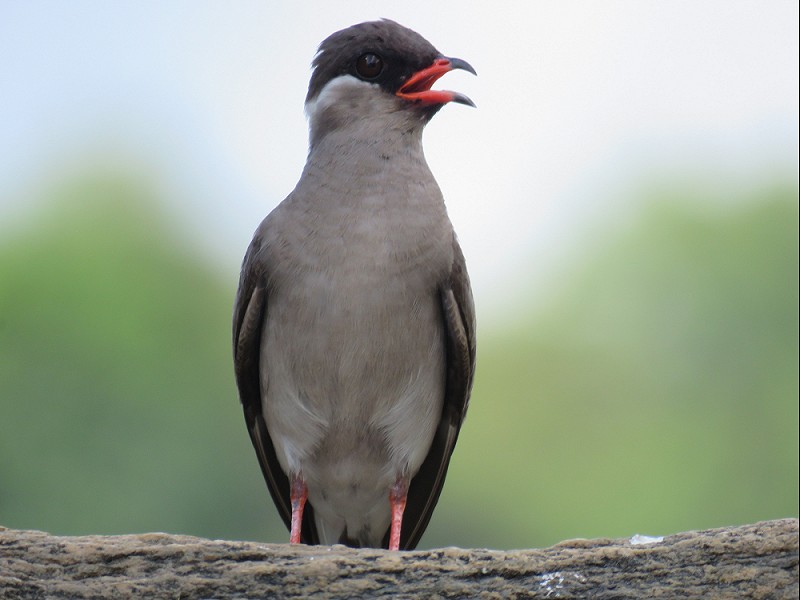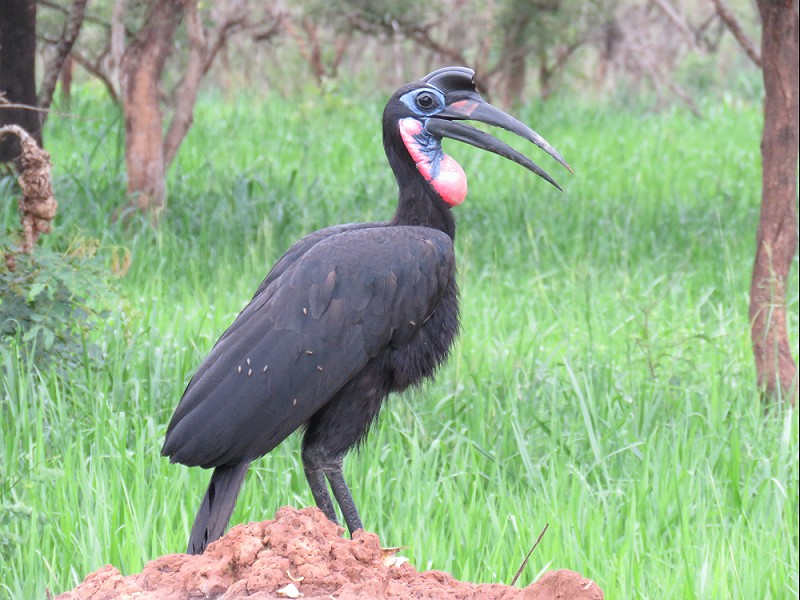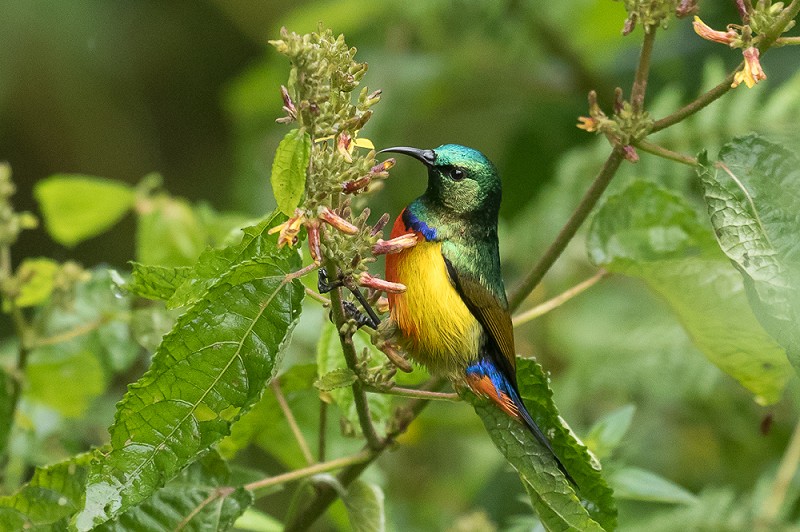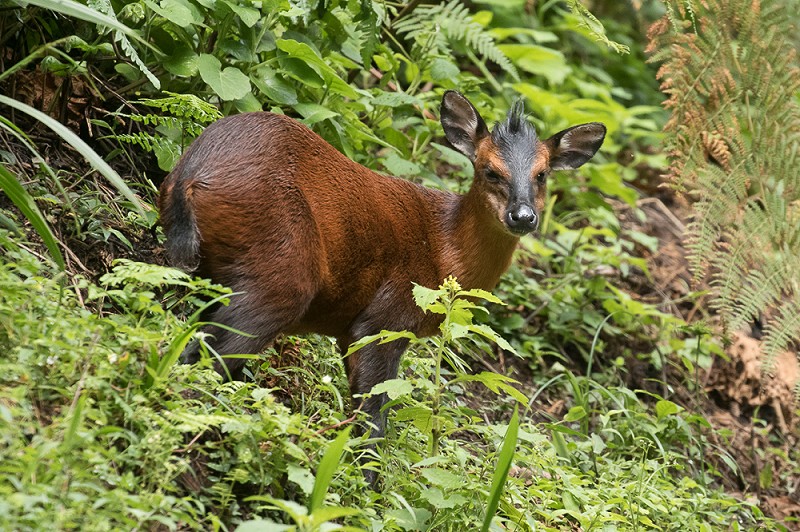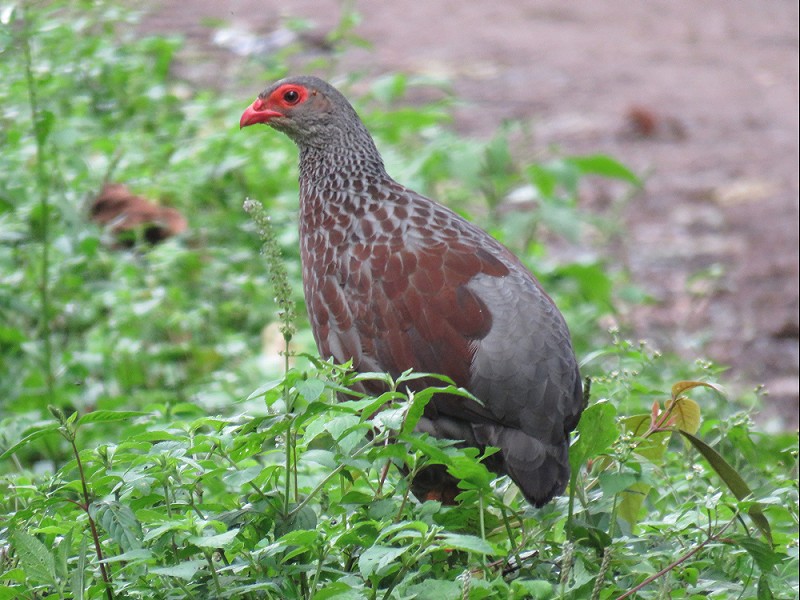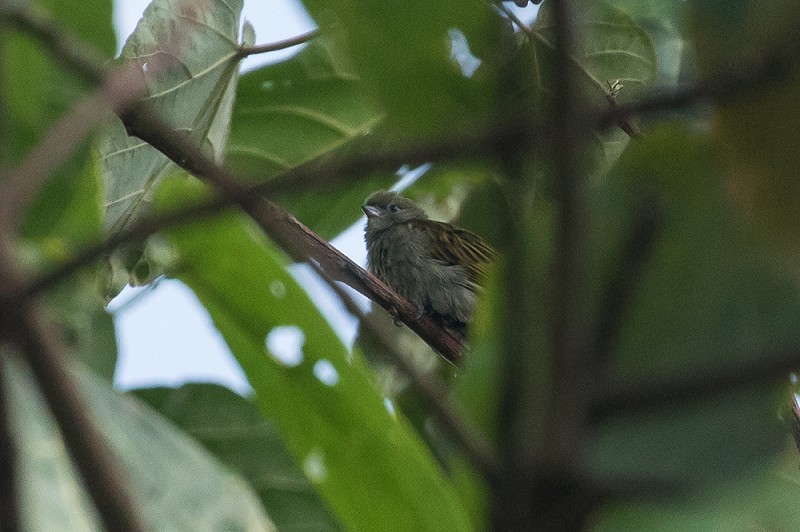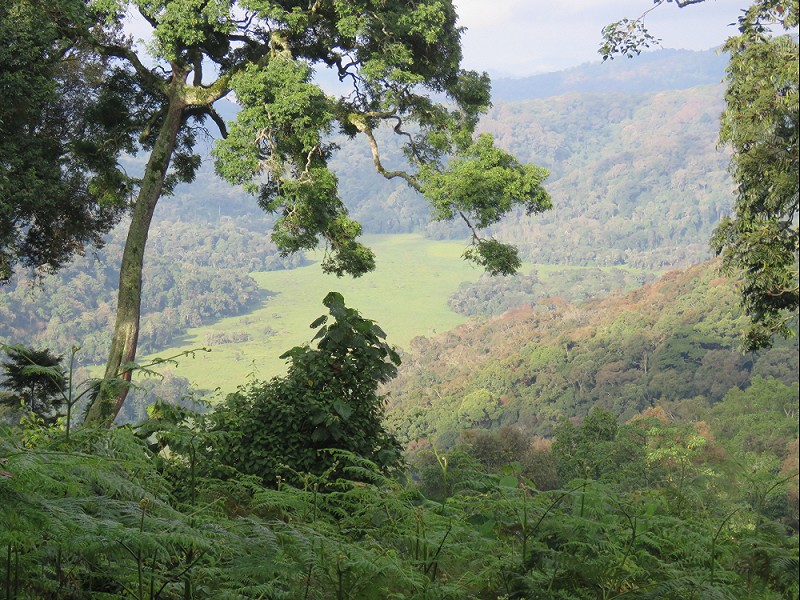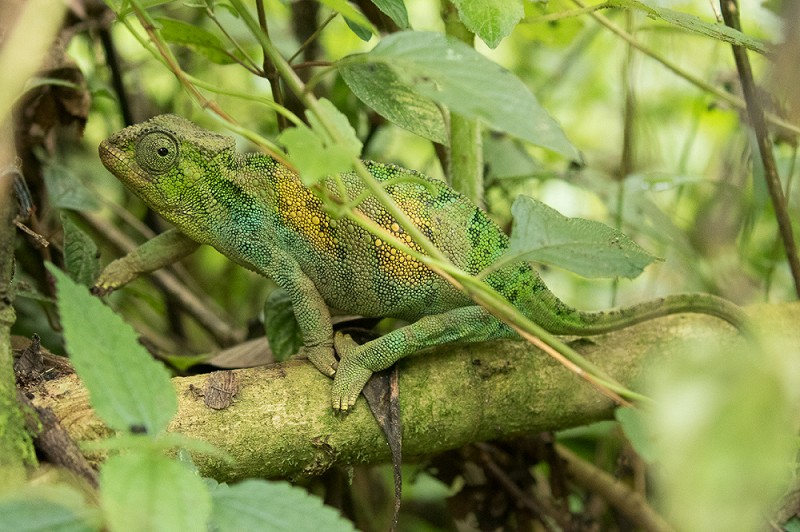April 30 - May 9
9 mei 2016 · Arjan Dwarshuis · 10738 × bekeken
PLEASE MAKE A DONATION NOW!
world.observation.org/arjan
www.arjandwarshuis.com/#biggestyear
April 30th A LIVING DINOSAUR
I had arrived at our hotel in Entebbe somewhere after midnight due to a delayed flight from Nairobi, no problem, that’s why I had chosen to fly during the night whenever possible so I would not jeopardize valuable daylight hours. At the hotel I was greeted by Sjaak Schilperoort, Wouter van Pelt, Rob Gordijn and Helen Rijkes and our guide Ibrahim, they will be my travel companions for the next 10 days in Uganda.
4 Hours later we had breakfast and were on our way to Mabamba Swamp, home to what is probably one of the most impressive birds on our planet, the dinosaur-like Shoebill, or Shoebill Stork (recent genetics actually revealed it as a distant relative of the Pelicans)!
At the jetty we were greeted by our guide Ismael and 10 minutes later we were on our way. I can tell you that the atmosphere is tense when there is a good possibility that a Shoebill could appear around every corner.
Slowly we boated through the swamp, meanwhile scanning the edges with our binoculars. Suddenly there was a Shoebill! Yes! But wait a minute, we were all looking at a different bird and in fact there were 3 of these greyish-blue beasts standing in the marsh, what a rare treat. We watched these most wanted birds for half an hour before we went after Papyrus Gonolek and Greater Swamp Warbler which we both quickly found.
Around 10 AM we were on hour way to Masindi, the gateway to Budongo Forest and the famous Royal Mile, one of the finest birding sites in the whole of Africa.
We made several stops en route which were very productive due to the abundance of roadside pools following the recent rains. Our best find was a Lesser Jacana on one of these roadside pools, but the sheer number of species was most impressive. We clocked out with 176 species in total, my highest day count ever.
May 1st ROYAL BIRDING ON THE ROYAL MILE
At 05:30 AM we left Masindi and headed for ‘The Royal Mile’, an exactly 1.6 km long straight track through the Budongo forest which is probably the finest lowland forest in East Africa. This track derived its name from the fact that the King of Uganda used this track for hunting and for enjoying the quietness of the forest. Nowadays it is a Mecca for birdwatchers visiting Uganda.
At the gate we were joined by Raymond, our local guide for today. Raymond has been birding and guiding in this forest since the late nineties and subsequently knows every bird call in the forest, even better, he can imitate each and every one of this calls, reminiscent of that guy from the movie ‘Police Academy’ :)
Mainly due to Raymonds superb guiding skills we had an extraordinary run of birds including multiple African Dwarf Kingfishers, Jameson’s- and Chestnut Wattle-eyes, the rare Ituri Batis, Rufous-capped Eremomela, Blue-throated Roller, Chestnut-capped Flycatcher, Forest Flycatcher, Shining Blue Kingfisher, Grey Longbill, Green- and Lemon-bellied Crombec, a pair of Willock’s Honeyguide and finally, after about 10 tries and admirable perseverance from Raymond, a beautiful Chocolate-backed Kingfisher!
We left the Royal Mile about 4 PM just as it started pouring down – timing has been perfect so far throughout this year J - and headed for Budongo Eco Lodge in Murchison Falls NP. Raymond has been one of the finest guides I have ever birded with and I can highly recommend him to anyone planning to visit Budongo Forest in the future.
May 2nd MURCHINSON FALLS
We had one big target in the forest surrounding the Budongo Eco Lodge, the elusive Puvell’s Illadopsis. Within an hour of patrolling the entrance road we heard at least 4 birds and managed to see one. Great! Not so great were the million’s of blood-sucking flies that came at us with everything they had.
We left the Budongo Eco Lodge and headed for Red Chilly Camp near the Nile shore, meanwhile a veracious mob of flies followed us throughout the entire ride and made our life as miserable as they possibly could. As a wise man once said, ‘it comes with the territory’. We did manage to pick up some good birds like Yellow-bellied Hyliota and Green-backed Eremomela.
In the afternoon we had a boat ride across the Nile to Murchison Falls, our choice would have been to do a safari on the western shore of the Park, but the ferry was broke so this was not an option.
The boat ride was a great experience – besides the fact that we didn’t get to many new species – and we enjoyed two major highlights, arm’s length views of 4 Rock Pratincoles and another fantastic Shoebill!
After diner we did a game drive hoping to find an early Pennant-winged Nightjar or a late Standard-winged Nightjar. Despite driving about 40 kilometres in total we could not find a single nightjar on the road. We did find a calling Buff-spotted Flufftail, a stunning Greyish Eagle Owl and on the mammal front, a Uganda Grass Rabit, Savannah Cane Rat and Blotched Genet.
May 3rd A FULL DAY ON THE ROAD
Today we had to drive all the way from Murchison Falls NP to Kibale Forest, almost 300 kilometres on an unpaved road…
We started with some birding en route on our way south through Murchison, this gave us two fantastic sightings, 3 different Red-winged Pytilia’s and best a stunning Dwarf Bittern that flew past and landed at the top of a tree, allowing excellent views of this secretive and seldom observed Bittern.
The rest of the day was predominantly long and hot and we arrived at Kibale Forest Camp around 8 PM where we got served an unexpected delicious 4 course dinner by the very hospitable staff. A very nice welcome after a full day of driving.
May 4th PITTA PAIN
We had a very early start this morning because we had a big target, the enigmatic Green-breasted Pitta. This rare and little known bird is on top of every birders wish list when visiting Uganda. Previously it was considered next to impossible, but since a decade or so it has been fairly regularly at Kibale Forest and with fairly regularly I mean that chances of seeing it are still less than 40 percent.
We met our guide Gerard at 6 o’clock at the Kibale office and we followed him into the - at the point - still pitch black rainforest.
As the forest woke up around us tension rose, would the Pitta deliver its liberating call? I would have loved to tell you that it did, but at 8:30 AM, after 2 hours of waiting there was nothing, not even a single call.
What we did see was a fantastic group of Chimpanzees feeding in a fig tree overhead, even more amazing was a daytime sighting of a Thomas’s Galago, a kind of nocturnal primate. In total we saw no less than 9 species of primate today!
We gave it one last effort to try to find it feeding somewhere on the forest floor, but those efforts were fruitless. This truly felt as one of the bigger dips this year, especially since I dipped this bird 10 years before at the same location…
We did found a couple of goodies in a huge mixed flock like Grey-headed sunbird, Velvet-mantled Drongo and White-headed Wood-hoopoe and at a small bridge we found the uncommon Cassin’s Flycatcher and a flyby Cassin’s Hawk-eagle.
The rest of the day was very slow and the walk around the Bigodi swamp did not yield a single new species. Well, I guess it was just one of those days…
May 5th THROUGH QUEEN E NP
We started with two hours of roadside birding along the main road leading through Kibale Forest before we hit the road again. Our efforts were quite successful with Lowland Masked Apalis, Afep Pigeon, Sabine’s Spinetail, Chestnut-winged- and Narrow-tailed Starling, but first price definitely went to a Cassin’s Honeybird foraging quietly at eye level.
The rest of the day we spend driving - very slowly because our engine was having some difficulties – through Queen Elizabeth NP to Buhoma, at the edge of Bwindi Impenetrable Forest. We made several stops that produced some new birds, but nothing spectacular before we finally arrived at our destination. Tomorrow a good full day birding in the forest again! Finally!
May 6th BWINDI
We met our guide Mathew at 7 o’clock and after some birding around the entrance road – you are not allowed in the primary forest before 7:30 AM – we headed into the forest.
Black Bee-eaters were joyfully common hunting from exposed perches above the canopy while Many-coloured Bushshrikes were hooting in the background.
The first ‘Albertine Endemic’ we found was a stunning Red-throated Alethe quickly followed by a Blue-headed Sunbird, but after that birding got a bit slow, probably because it was burning up quickly with bright blue skies.
A personal highlight was one the mammal front when a Yellow-backed Duiker appeared on the trail, this is a very shy and rarely encountered antelope in Uganda.
Towards the end of the morning session we redeemed ourselves with a calling Neuman’s Warbler and the recently describer Willard’s Sooty Boobou. We actually managed to see this cryptic species and both Rob and I saw the diagnostic pale iris.
Our lunch back at the camp was timed perfectly as it started pouring down just as we were feasting on a big plate of pasta Bolognese!
After that bit of rain birds became active again and our afternoon session produced some great sightings like Grey-winged Robin-chat, White-bellied Robin-chat and Green-backed Twinspot.
May 7th ALBERTINE ENDEMICS!
After an early start we headed for Ruhija, situated on the other side of Bwindi at about 2300 meters altitude, 800 meters higher than Buhoma. This means that Ruhija boast a completely different set of species, the majority being ‘Albertine endemics’. Before heading up we made a stop at ‘The Neck’, a nice stretch of forest bordering the roadside. Highlights at this location were both Least Honeyguide and a Cassin’s Honeybird, both allowing scope views.
After having lunch at the very nice Gorilla Friends Resort – our home for the next 2 days – we started birding along the roadside. I found birding at Ruhija much better than Buhoma and we picked up one mega after the other.
An early highlight was a cooperative Grauer’s Warbler, a notorious skulker that normally is next to impossible to see. Canopy dwelling Rwenzori- and Mountain Masked Apalises, stunning Regal Sunbirds and the aptly named Strange Weaver were other great finds, but the absolute best finds of the afternoon came when we were driving a bit further uphill in form of a very showy pair of Handsome Francolin and a Ruwenzori Duiker.
Our night-time efforts to find a Ruwenzori Nightjar were unsucceful, but we will have another go at that one tomorrow night.
May 8th TRACKING TO MUBWINDI SWAMP
At 07:30 AM we met our guide Amos at the head office of Ruhija since for some reason Bwindi park doesn’t open earlier. We had a big target today, the African Green Broadbill, but we already knew that our chances of actually seeing it were next to zero since the birds are not nesting this time of the year.
The track down to Mubwindi swamp was absolutely magnificent and besides some high quality birds like Dwarf Honeyguide and Ruwenzori Batis the scenery and the quality of the rainforest was top notch. This was truly the one of the most beautiful hikes I’ve ever made.
Long story short, we arrived at the Broadbill site and birded there for the whole late morning and afternoon, but as expected the glorious moment of actually seeing it did not happen :(
We did see some astounding good birds like Archer’s Ground Robin, Red-chested Flufftail, Grauer’s Swamp Warbler, White-bellied Crested Flycatcher and Yellow-eyed Black Flycatcher which made the pain of dipping the broadbill less unbearable.
We ended this long day in the field with a cold Nile Special as the sun set over the Ruwenzori Mountains while a Ruwenzori Nightjar called in the distance. Man I love Africa!
May 9th TRAVEL DAY TO ENTEBBE
Rob, Helen and I spent the entire day traveling back to Entebbe. We did make a couple of birding stops that materialized in a fantastic sighting of a Common Buttonquail.
The best bird of the day and also our last new bird in Uganda was the stunning Orange Weaver along the shores of Lake Victoria in the Entebbe Botanical Gardens.
Tomorrow off to Tanzania!!
Arjan Dwarshuis
PLEASE MAKE A DONATION NOW!
world.observation.org/arjan
www.arjandwarshuis.com/#biggestyear
Discussie
Jurgen van der Meer
·
10 mei 2016 15:57
Prachtig verslag weer. Op de helft!
Ben Dielissen
·
11 mei 2016 22:14
Geweldig om te lezen! Ik ben in 16 Afrikaanse landen geweest maar moest destijds Oeganda overslaan vanwege de burgeroorlog aldaar. Ga er zeker nog naartoe al is het alleen al voor de Shoebill! Verder houd je het tempo er wel in zeg ; heb ik grote bewondering voor!
Hans Groot
·
12 mei 2016 23:29
Helemaal mee eens. Ik heb de trail naar Mubwindi Swamp in februari 2013 gelopen. Een van mijn mooiste vogeltochten ooit. En met nestelende African Green Broadbills onderaan de trail :-)
Gebruikers van het forum gaan akkoord met de forumregels.



